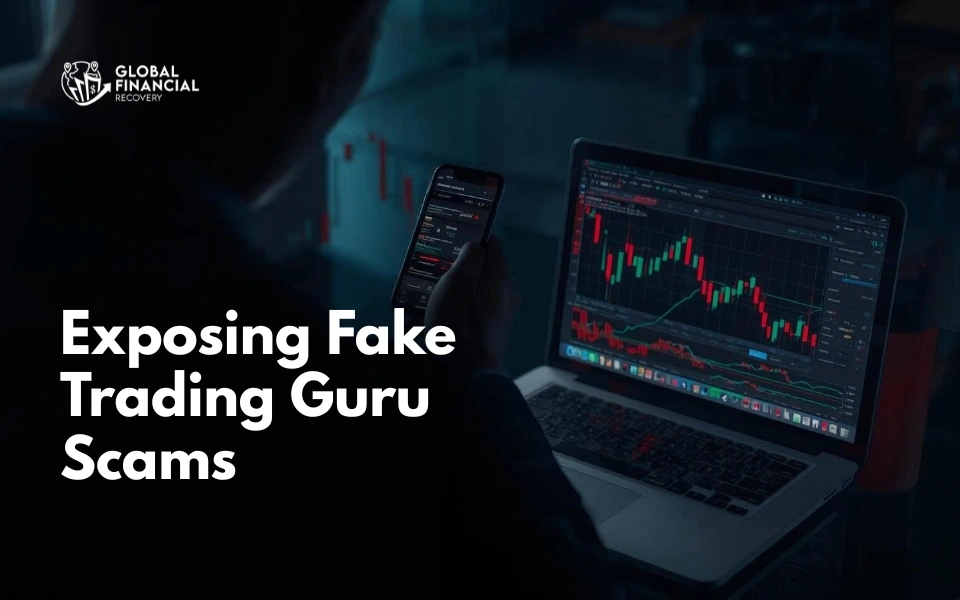
- Forex
- November 21, 2024
Table of Contents
The forex trading market is one of the world’s largest financial markets, with trillions traded daily. However, this high liquidity and profit potential make it a clear target for forex trading scams.
Due to fake documents, fake high revenues and pay-out schemes which are confusing and misleading, the intentions of swindlers are to rip off the traders and acquire fraudulent ways to lure your hard-earned money.
This article will guide you to learn how you can identify popular forex trading frauds and how to employ forex scam recovery services if you have been a victim. So let’s go through these FX trading also called currency trading scams and how you can avoid being an effortless victim.
What is a Forex Scam?
Online Forex scams or foreign exchange trading scams are fraudulent schemes where scammers entice traders to invest with promises of guaranteed profits or access to exclusive trading strategies.
These scams range from fake forex brokers to forex options trading frauds. By learning to identify these scams and the tactics used, traders can safeguard their investments and make more informed decisions.
Recognizing Forex Trading Scams
Forex scams come in various forms, where many times they appear as investment opportunities. Other most common ones are the unregulated forex brokers and the trading forex bots, who pressure you with their sales pitch and force you to trade forex through their fraud schemes.
Below is a tabular representation of common Trading Scams with examples and the red flags or warning signs to spot them.
|
Types of Scams |
Explanation |
Real-Life Example |
Red Flags/Warning Signs |
|
Fake Forex Brokers |
Brokers posing as legitimate entities, preventing traders from accessing their funds. |
In 2022, a fake broker promised high returns but blocked all withdrawal requests. |
Broker refuses withdrawals or disappears after initial deposits. |
|
Signal Sellers |
Selling unreliable forex trading signals at high prices. |
A signal seller charged $500 monthly but only provided random, ineffective signals. |
Promises exclusive signals with high returns. |
|
Robot Scams |
Automated systems promising high profits with little intervention. |
A bot advertised as a “no-fail” forex robot caused major losses for users within a month. |
Claims of guaranteed profits from an automated system. |
|
Ponzi or Pyramid Schemes |
Requires new participants to pay “returns” to earlier investors, inevitably collapsing. |
A Ponzi scheme targeted forex traders with a promise to double investments every two months. |
High, unrealistic returns funded by new investors, rather than profits. |
|
Social Media Imposters |
Fake profiles impersonating successful traders, often on Instagram or Facebook. |
An imposter posed as a famous trader, soliciting funds, then disappeared with investors’ money. |
Soliciting investments via social media with “limited-time” opportunities. |
|
Fund Manager Scams |
Fraudulent fund managers claim to trade on behalf of investors but misappropriate funds. |
A fake fund manager claimed to generate consistent returns but vanished after receiving large deposits. |
High fees, no access to account or transaction history, and vague communication about results. |
Most Common Ways to Spot Forex Trading Scams
Below are the most common 7 ways to spot and identify forex trading scams:
- Unrealistic Profit Promises:
Be cautious of anyone promising “guaranteed returns” or “risk-free trading.” The forex market involves inherent risk, and no one can promise consistent profits.
- Fake Credentials and Endorsements
Scammers often fabricate endorsements or claim to be affiliated with reputable financial regulators. Always verify credentials with established regulatory authorities like the FCA, ASIC, or CFTC.
- Unregulated Brokers
Many forex trading scams also known as FX scams operate through unregulated brokers. Verifying regulatory compliance is essential to avoid forex broker scams.
- High-Pressure Sales Tactics
Scammers often rush investors into quick decisions by warning of “limited-time offers.” A legitimate broker will give you time to assess your investment.
- Lack of Transparency
Be cautious of brokers who are vague about fees, withdrawals, and trade execution processes. Legitimate brokers offer clear, straightforward policies.
- Complicated Withdrawal Process
Difficulty in withdrawing funds is a red flag. Regulated brokers have clear withdrawal procedures, unlike scam brokers who block access to funds.
- Use of Forex Robots or Automated Systems
Scammers often promote “forex robots” or automated systems with guaranteed returns. Verify any trading software’s credibility before using it.
Real-Life Example of a Forex Scam
Consider the example of "Investor B," who joined an unregulated forex brokerage firm that claimed to have low-risk high yields. A few days after Investor B had deposited his money, issues began cropping up during the process of withdrawal, and even customer support went dead. Recovery efforts were made, but the broker vanished. Thus, selecting regulated brokers and conducting research into those who are running eventual Forex trading scams is essential.
Conclusion
Forex trading is rewarding but vulnerable to fraud. By recognizing common red flags and using forex scam recovery services when necessary, you can protect your investments. If you suspect you’ve been scammed, consult with expert scam recovery firms for assistance. Avoid unregulated brokers, be cautious with promises of “quick returns,” and ensure any broker is transparent about fees and withdrawals.
FAQs (Frequently Asked Questions)
Look for brokers regulated by trusted financial bodies like the FCA, CFTC, or ASIC. There is always something to read online, so do reviews, too, and get a sense of their track history.
Report the scam: To the relevant financial authorities, seek help from forex fraud recovery services. Get in touch with legal experts in case of actual fraud.
While no method is foolproof, researching broker credentials, avoiding high-pressure sales, and steering clear of guaranteed returns can significantly reduce your risk.
While challenging, reporting the scam, seeking legal help, and consulting recovery services can aid in fund retrieval.
Trusted educational resources, online forex courses, and regulated forex forums are excellent for learning safe trading strategies.





